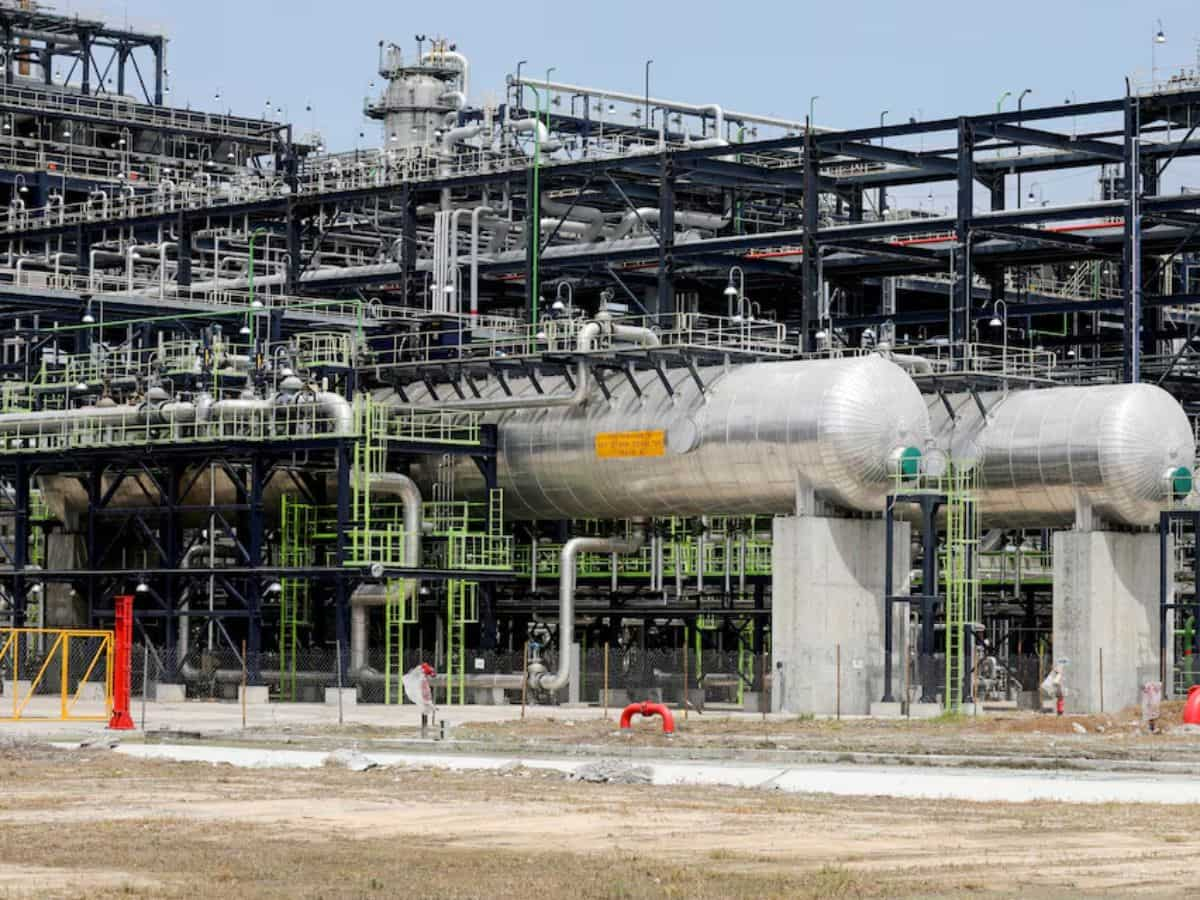Global Oil Markets React to Increased US Inventories and Middle Eastern Ceasefire Talks
With oil prices dipping amidst growing US inventories and ceasefire prospects in the Middle East, global oil markets face a period of adjustment.
Published May 02, 2024 - 00:05am

Image recovered from zeebiz.com
Brent crude oil price news: Oil prices fell for a third consecutive day on Wednesday, influenced by a combination of rising US crude inventories, increased production, and the potential easing of geopolitical tensions in the Middle East. Brent crude futures and US West Texas Intermediate crude both saw declines amid these developments, reflecting a shifting landscape in the global energy sector.
Market sources citing American Petroleum Institute figures reported that US crude oil inventories saw a significant swell last week, a movement contrary to the falling gasoline and distillate stockpiles. The Energy Information Administration's official data further confirmed this trend, not only pointing to increased inventories but also marking a significant uptick in production - the largest monthly increase in three and a half years.
Amidst the evolving market dynamics, the possibility of a ceasefire agreement in the ongoing conflict between Israel and Hamas, facilitated by Egypt, added further pressure on oil prices by potentially mitigating supply disruption risks from the Middle East. However, this is tempered by Israeli pledges of continued military operations, introducing complexity to the ceasefire prospects and their potential impact on the region's stability and oil supply.
The effect of these factors on oil markets is not isolated. An organization central to the global insurance industry has labeled the price cap on Russian oil increasingly difficult to enforce, suggesting complications in the efforts to curb Russian oil exports. Russia's seaborne crude flows have demonstrated a decline, with shipping volumes and values falling, though this has yet to cause a significant shift in average crude shipments for the year.
Notably, Iraq is expected to begin gas production at its West Qurna field before the year's end, which may further influence regional supply dynamics. Additionally, Iraq's energy engagements, particularly with China, signal a strategic alignment that could alter the future landscape of oil and gas production and exports in the Middle East.
In response to these multifaceted developments, market analysts and traders are closely monitoring official data from energy administrations, geopolitical events, and the broader economic context, including interest rates and inflation, all of which are poised to steer the trajectory of oil prices and market stability in the near term.
The downturn in oil prices is reflective of broader economic trends, as investors weigh the impact of inflation and the potential for interest rate hikes on global demand. While oil markets typically react to supply concerns, current trends indicate that demand-side factors are becoming increasingly significant. Analysts are observing shifts in energy consumption patterns and advancements in technology that may dampen oil demand over the long term, contributing to the downward pressure on prices.
In the immediate term, the continued strength of the US dollar has been a contributing factor to the oil price slump, making dollar-priced commodities like oil more expensive for holders of other currencies. This effect has been compounded by the Federal Reserve's signals of a more hawkish monetary policy, heightening concerns over slowed economic growth impacting oil demand.
Furthermore, China's recent COVID-19 lockdowns in major cities have raised further concerns about the short-term outlook for oil demand. China is the world's largest importer of crude oil, and disruptions in its economic activities can have a pronounced effect on the global oil market. As such, the potential for prolonged restrictions has injected additional uncertainty into the market, influencing investor sentiment and adding to the bearish outlook.
Looking ahead, the OPEC+ group, which includes the Organization of the Petroleum Exporting Countries (OPEC) and other major producers like Russia, is navigating a complex environment. The group's ongoing supply management strategies aim to stabilize the market amid these headwinds. Market participants will be keenly watching for any changes in OPEC+'s production quotas, which could either exacerbate the glut or help to stabilize prices, depending on global economic conditions and the balance of supply and demand.
Environmental and sustainability concerns are also increasingly at the forefront of energy policy, potentially hastening the transition away from fossil fuels. Investment in renewable energy sources is on the rise, and regulatory changes aimed at reducing carbon emissions could alter oil's position in the energy mix over time. These factors pose additional considerations for the long-term trajectory of oil markets and underscore the complexity of forecasting price movements.
In conclusion, while traders and analysts monitor the volatility in oil prices, the confluence of factors contributing to the recent drops is a reminder of the oil market's susceptibility to a wide array of influences. From supply-side changes to global economic shifts, environmental policies, technological advancements, and geopolitical events, each element plays a pivotal role in shaping the landscape of the energy sector. The world's gaze remains fixed on how these interplaying dynamics will unfold, forecasting the ebbs and flows of the oil market in both the immediate and distant futures.





:quality(70)/cloudfront-eu-central-1.images.arcpublishing.com/irishtimes/SV5HVQWI7BV6H65746THQB7QAM.jpg)

